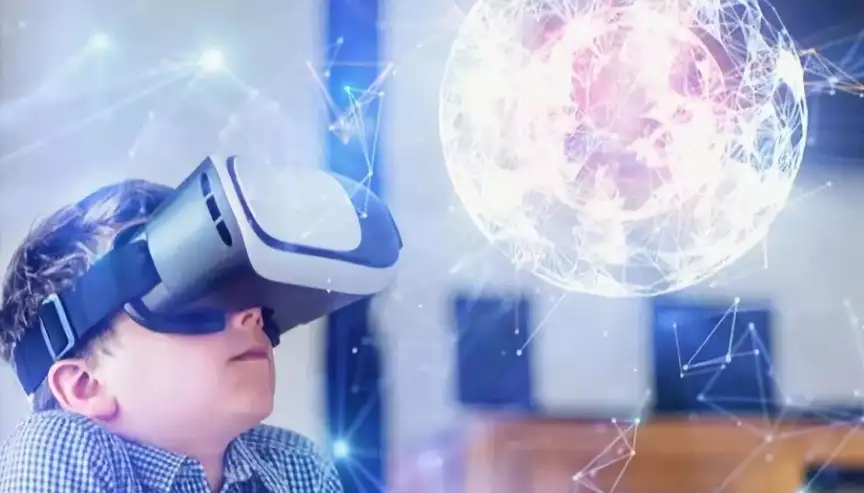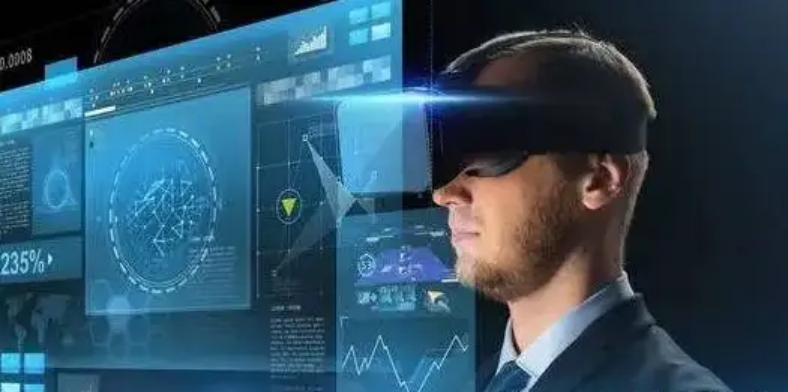A report by Goldman Sachs predicts that the industry value of AR/VR/MR is expected to reach $95 billion by 2025. The combination of AR/VR/MR with AI (Artificial Intelligence) will drive new user experiences and novel ways for humans to interact with the world.

The Integrated Application of AR/VR/MR and AI Technology
AR (Augmented Reality) refers to the technology that overlays data onto physical reality using a fusion of sensor data from cameras, accelerometers, etc.
VR (Virtual Reality) refers to computer-generated 3D image simulations that allow people to interact with digital environments.
MR (Mixed Reality) is a technology that deeply integrates the virtual world with the real environment. It combines Virtual Reality (VR) and Augmented Reality (AR), enabling real-time interaction between computer-generated virtual objects and the real world. MR can superimpose virtual elements into the real environment and allow these virtual objects to possess physical characteristics of the real world (such as real-time physical interaction and dynamic response).
AR/VR/MR have a profound complementary relationship with AI. AI excels at many operations beneficial to AR/VR/MR, such as tracking objects, creating detailed models of 3D worlds, understanding the characteristics of these models, and making judgments about them. Deep learning models in AI can help AR/VR/MR systems interpret complex environments.
Due to these complementary characteristics, AI is beginning to replace traditional computer vision methods in the field of AR/VR/MR. Many industry leaders predict that AI will help drive the application of immersive technologies in both consumer and commercial domains. Specifically, AI can use more realistic models and provide people with stronger contextual interaction abilities, thereby optimizing the immersive experience of AR/VR/MR.

AI-Driven Immersive Applications of AR/VR/MR
AI empowers AR/VR/MR technology in many aspects of industry applications: improving content quality, optimizing and advancing personalized user experiences, and facilitating more effective interactions between users and technology. Here are a few noteworthy industries:
Gaming Industry
When mentioning AR/VR/MR, gaming might be the first example that comes to mind. In fact, the creative industry has the strongest demand for AR/VR/MR technology, ranging from video games to live events and video entertainment. AI helps create increasingly realistic gaming experiences and provides players with more opportunities to interact with digital environments.
Retail Industry
Retail may be the biggest beneficiary in the field of AR/VR/MR after the creative industry: As shoppers navigate through stores, pop-up coupons appear in the digital environment; virtual showrooms display products customized according to shoppers’ interests or needs; virtual fitting rooms allow customers to try on clothes comfortably at home; furniture is shown to customers via AR placed in their own homes, etc.

Aerospace Industry
Using deep learning technology for image recognition, it is possible to assist engineers in dealing with aircraft maintenance issues by identifying which components of the aircraft need improvements.
Military Field
AI-driven VR can guide military personnel through simulated dangerous environments, reducing their error rates in real situations.
Technology Sector
Smart glasses may become standard equipment for all of us in the future. When encountering others, smart glasses can provide us with useful information about them. For example, if we meet a colleague, smart glasses can recognize their position in the company.

Communications Field
AR/VR/MR could be part of virtual meetings around you. AI can add camera tracking functionality to keep everyone’s attention focused on the speaker, making users feel like they are in the office meeting with colleagues rather than at home in front of a computer. Simultaneously, it can translate the speaker’s content into different languages for every participant.
Security Sector
Security departments can utilize AI-driven XR devices for identity detection and to tag images of suspicious individuals.
Education Sector
Through the training of AI large models on professional knowledge, VR teaching can personalize instruction based on each student’s mastery of knowledge points. The system can quickly retrieve students’ historical learning data and tailor VR teaching content for them, ensuring that each student learns at a suitable pace. AI has a profound complementary relationship with AR/VR. AI excels at many operations beneficial to AR/VR, such as tracking objects, creating detailed models of 3D worlds, understanding the characteristics of these models, and making judgments about them. Deep learning models in AI can help AR/VR systems interpret complex environments.
Data-Empowered AI-Driven AR/VR/MR
AI-driven AR/VR/MR systems require a vast amount of data. Therefore, data collection and annotation become critical steps in building such technologies. Data is collected through sensors, product images, social networks, and other channels, and key characteristics are annotated according to different application scenarios for model recognition. Here are several common types of data annotation:
Text Data
Text Recognition and Translation: Models learn to detect and read text in images, then translate it into the appropriate language. AR technology can overlay the translated text into the real world.
Image Data
Object Detection: Models learn to recognize objects in images and their locations, triggering hit boxes and collision bodies that enable user interaction with the environment.
Classification: Models learn to classify target objects in images, then trigger annotations displaying the image.
Segmentation: Typically performed at the pixel level, models learn to segment target objects in images.
Audio Data
Audio Recognition: Models process audio, such as speech, and interpret it accordingly. Certain keywords may trigger AR/VR/MR effects, such as in gaming environments.
In AI-driven AR/VR/MR applications, the more data collected, the more realistic the environment can be; higher-quality data can produce equally high-quality environments and even create more personalized environments for users.

Moreover, AR/VR/MR data often contains personal identifiable information used to create customized environments and interactions, including geolocation data, biometrics, purchase histories, and other private data. Data security is crucial when building these applications. The use of private data requires strict security protocols to meet the highest compliance levels for the region and data type.
Therefore, in the coming years, AI is poised to become the engine driving the AR/VR/MR industry forward, while a large volume of high-quality training data serves as the fuel for this engine’s development. The continued development of AI and immersive technologies is inevitable, presenting new opportunities for the entire industry to access the AI express lane. DBiM advocacy of AI-empowered metaverse business services will also bring users more high-value products and services.
Leave a Reply